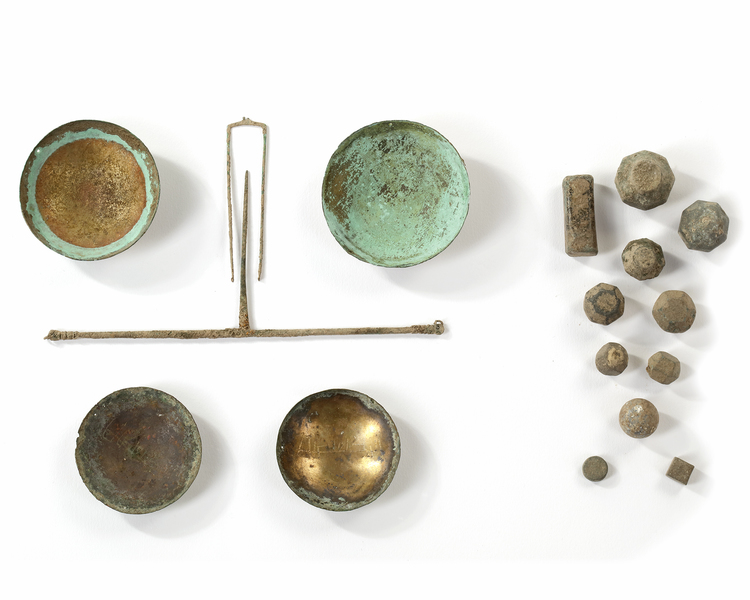VERY RARE GOLD-DAMASCENED PEARL MERCHANT’S WEIGHING SET, ABBASID PERIOD, CIRCA 300-400 AH/1000-1100 AD
With four bronze pans, which originally hung from a bronze arm, one pan at each end, suspended by thin chains or threads which have not survived. and scroll and pillar with suspension loop and different sizes lead weights, both pans with Kufic script. The inscription in the two pans reading: ‘alf lm mym kal faydan’. The four bowls ranging from: 5.5 to 7 cm. diam.
CATALOGUE NOTE The weights as an autonomous branch of science was triggered by the eminent importance of balances for commercial purposes. In a vast empire with lively commerce between culturally and economically fairly autonomous regions, more and more sophisticated balances were, in the absence of standardization, key instruments governing the exchange of currencies and goods, such as precious metals and stones. It is therefore no surprise that Muslim scholars produced numerous treatises specifically dealing with balances and weights, explaining their theory, construction and use. This literature culminated in the compilation by ‘Abd ar-Rahman al-Khazini, around 1120, of Kitab mizan al-hikma, an encyclopedia of mechanics dedicated to the description of an ideal balance conceived as a universal tool of a science at the service of commerce, the so-called ‘balance of wisdom.’ This was capable of measuring absolute and specific weights of solids and liquids, calculating exchange rates of currencies, and determining time.




